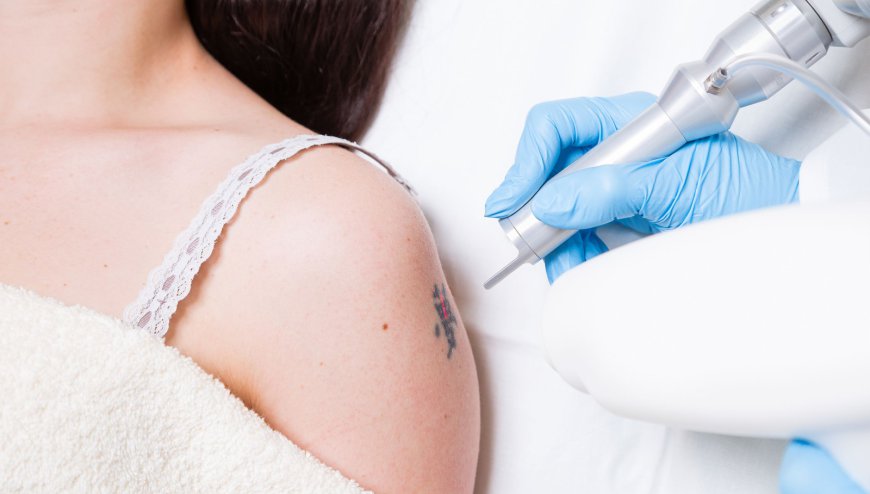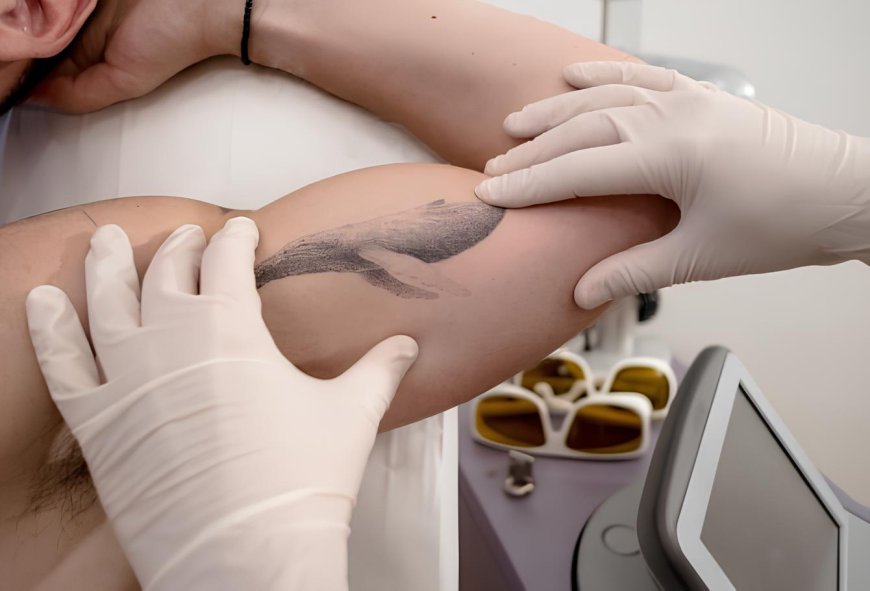Laser Tattoo Removal Facts You Need to Know
Laser tattoo removal works by using lasers to break down ink particles, which are then cleared by the body. It involves multiple sessions and minimal discomfort. Benefits include precision, minimal downtime, and effectiveness on various tattoo colors.

Laser tattoo removal has become a popular choice for those looking to erase or modify their tattoos. If you're considering this procedure, especially in places like Dubai, it's important to understand how it works, what to expect, and what factors can affect the outcome. Here’s a comprehensive guide to help you navigate through the laser Tattoo Removal in Dubai process.
How Laser Tattoo Removal Works
The Basics of Laser Technology
Laser tattoo removal relies on advanced technology to target and break down tattoo ink particles. Lasers emit light at specific wavelengths, which are absorbed by the ink in the skin. This light energy causes the ink particles to fragment into smaller pieces. The body then naturally removes these tiny ink fragments through the lymphatic system.
Types of Lasers Used
Different types of lasers are used for tattoo removal, each targeting various ink colors. The most common lasers include:
- Q-switched Nd lasers: Effective for darker ink colors like black and blue.
- Q-switched Ruby lasers: Best for red and orange ink.
- Q-switched Alexandrite lasers: Suitable for green ink.
- Pico lasers: A newer technology that offers faster treatment and potentially fewer sessions.

What to Expect During the Procedure
The Initial Consultation
Before starting treatment, you'll have a consultation with a specialist. During this meeting, you'll discuss your tattoo, your medical history, and your goals. The specialist will evaluate the tattoo’s size, color, and location to determine the best approach.
The Treatment Session
Laser tattoo removal sessions usually last between 20 to 60 minutes, depending on the tattoo's size and complexity. During the procedure, you might feel a sensation similar to a rubber band snapping against your skin. Many clinics use cooling devices or topical anesthetics to minimize discomfort.
Aftercare and Recovery
Post-treatment care is crucial for optimal results and to minimize side effects. You may experience redness, swelling, and blistering in the treated area. It’s essential to follow the aftercare instructions provided by your specialist, which may include keeping the area clean, avoiding sun exposure, and applying prescribed ointments.
Factors Affecting Laser Tattoo Removal
Tattoo Characteristics
Several factors can influence how effectively a tattoo responds to laser removal:
- Ink Color: Darker inks like black and blue typically respond better to laser treatment compared to lighter colors.
- Tattoo Age: Older tattoos are generally easier to remove than newer ones as the ink has already begun to fade.
- Ink Depth: Tattoos with deeper ink penetration can be more challenging to remove.
Skin Type and Health
Your skin type and overall health play a significant role in the effectiveness of the removal process. Those with healthier skin and good immune function tend to experience better results. Skin conditions or health issues might affect the healing process and the outcome of the treatment.
Number of Sessions Required
Laser tattoo removal is rarely a one-time process. The number of sessions required varies based on the tattoo's characteristics and how your skin responds to treatment. On average, most tattoos require between 5 to 10 sessions, spaced several weeks apart to allow for adequate healing and ink fragmentation.
Benefits of Laser Tattoo Removal
Precision and Effectiveness
Laser tattoo removal offers high precision, targeting only the ink and minimizing damage to the surrounding skin. This method is effective for a wide range of ink colors and tattoo types, making it a versatile choice for those looking to remove or alter their tattoos.
Minimal Scarring
Compared to older removal methods like dermabrasion or excision, laser removal generally results in minimal scarring. While some risk of scarring exists, modern lasers and techniques aim to reduce this risk significantly.
Risks and Considerations
Potential Side Effects
As with any medical procedure, laser tattoo removal comes with potential side effects. Common side effects include redness, swelling, and blistering. In rare cases, there might be changes in skin pigmentation or scarring. It’s crucial to choose a qualified and experienced specialist to minimize these risks.
Cost and Time Commitment
Laser tattoo removal can be a costly process, with each session potentially ranging from a few hundred to over a thousand dollars. Additionally, the total time commitment includes not only the number of sessions but also the recovery time between them. Be prepared for the financial and time investment required to achieve your desired results.
Conclusion
Laser tattoo removal offers a promising solution for those looking to erase or modify their tattoos. Understanding how the process works, what to expect, and the factors influencing the outcome can help you make informed decisions. Whether you’re considering tattoo removal in Dubai or elsewhere, choosing a reputable clinic and following aftercare instructions will contribute to achieving the best possible results.
